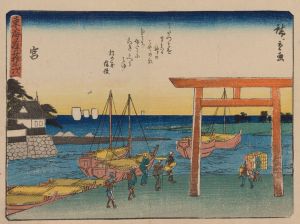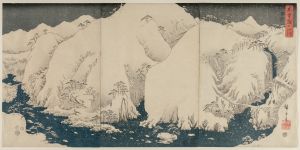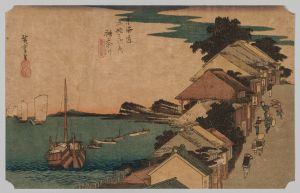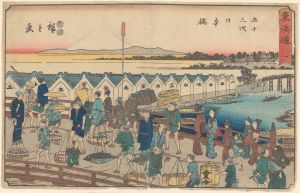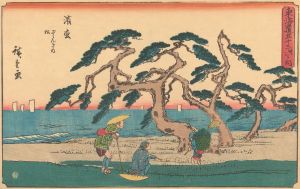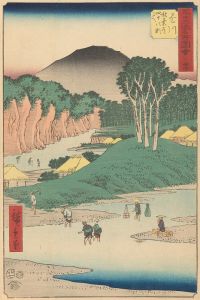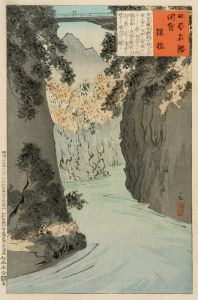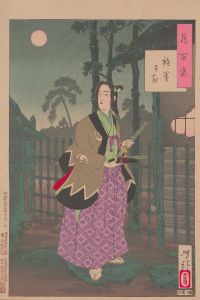
Ishiyakushi
A hand-painted replica of Andō Hiroshige’s masterpiece Ishiyakushi, meticulously crafted by professional artists to capture the true essence of the original. Each piece is created with museum-quality canvas and rare mineral pigments, carefully painted by experienced artists with delicate brushstrokes and rich, layered colors to perfectly recreate the texture of the original artwork. Unlike machine-printed reproductions, this hand-painted version brings the painting to life, infused with the artist’s emotions and skill in every stroke. Whether for personal collection or home decoration, it instantly elevates the artistic atmosphere of any space.
Andō Hiroshige, a renowned Japanese ukiyo-e artist of the Edo period, is celebrated for his landscape prints and his series "The Fifty-three Stations of the Tōkaidō." One of the prints in this series is "Ishiyakushi," which depicts the Ishiyakushi-juku, the forty-fifth station along the Tōkaidō road. This road was a vital travel and trade route that connected Edo (modern-day Tokyo) with Kyoto, and Hiroshige's series captures the essence of travel during this period, highlighting the natural beauty and cultural significance of each station.
"Ishiyakushi" is notable for its serene and picturesque representation of the landscape surrounding the station. The print typically features a tranquil rural scene, with travelers making their way along the road, often accompanied by natural elements such as trees, mountains, and rivers. Hiroshige's use of color and composition in this print exemplifies his ability to convey the atmosphere and mood of a specific location, drawing the viewer into the scene.
The Ishiyakushi-juku was historically significant as a post station where travelers could rest and resupply during their journey along the Tōkaidō. It was named after the nearby Ishiyakushi Temple, which was a popular pilgrimage site. The temple was dedicated to Yakushi Nyorai, the Buddha of healing, and was believed to have been founded in the 8th century. The presence of the temple added to the cultural and spiritual importance of the area, making it a notable stop for both pilgrims and travelers.
Hiroshige's depiction of Ishiyakushi reflects the artist's keen observation of everyday life and his ability to capture the subtleties of the changing seasons and weather conditions. His work is characterized by a harmonious blend of human activity and the natural environment, which is evident in the way he portrays the interaction between travelers and the landscape. The print often includes details such as travelers in traditional attire, local flora, and architectural elements that provide insight into the period's cultural and social context.
The "Fifty-three Stations of the Tōkaidō" series, including "Ishiyakushi," was highly influential and remains one of Hiroshige's most celebrated works. It played a significant role in popularizing the Tōkaidō road and contributed to the development of landscape art in Japan. Hiroshige's innovative use of perspective, color, and composition in this series had a lasting impact on both Japanese and Western art, influencing artists such as Vincent van Gogh and Claude Monet.
In summary, "Ishiyakushi" by Andō Hiroshige is a masterful representation of a historical post station along the Tōkaidō road. Through his detailed and evocative portrayal of the landscape and travelers, Hiroshige captures the essence of Edo-period travel and the cultural significance of the Ishiyakushi-juku. His work continues to be celebrated for its artistic merit and its contribution to the understanding of Japanese culture and history.





